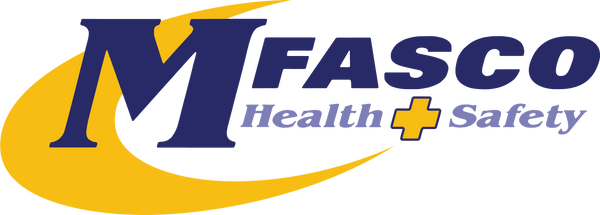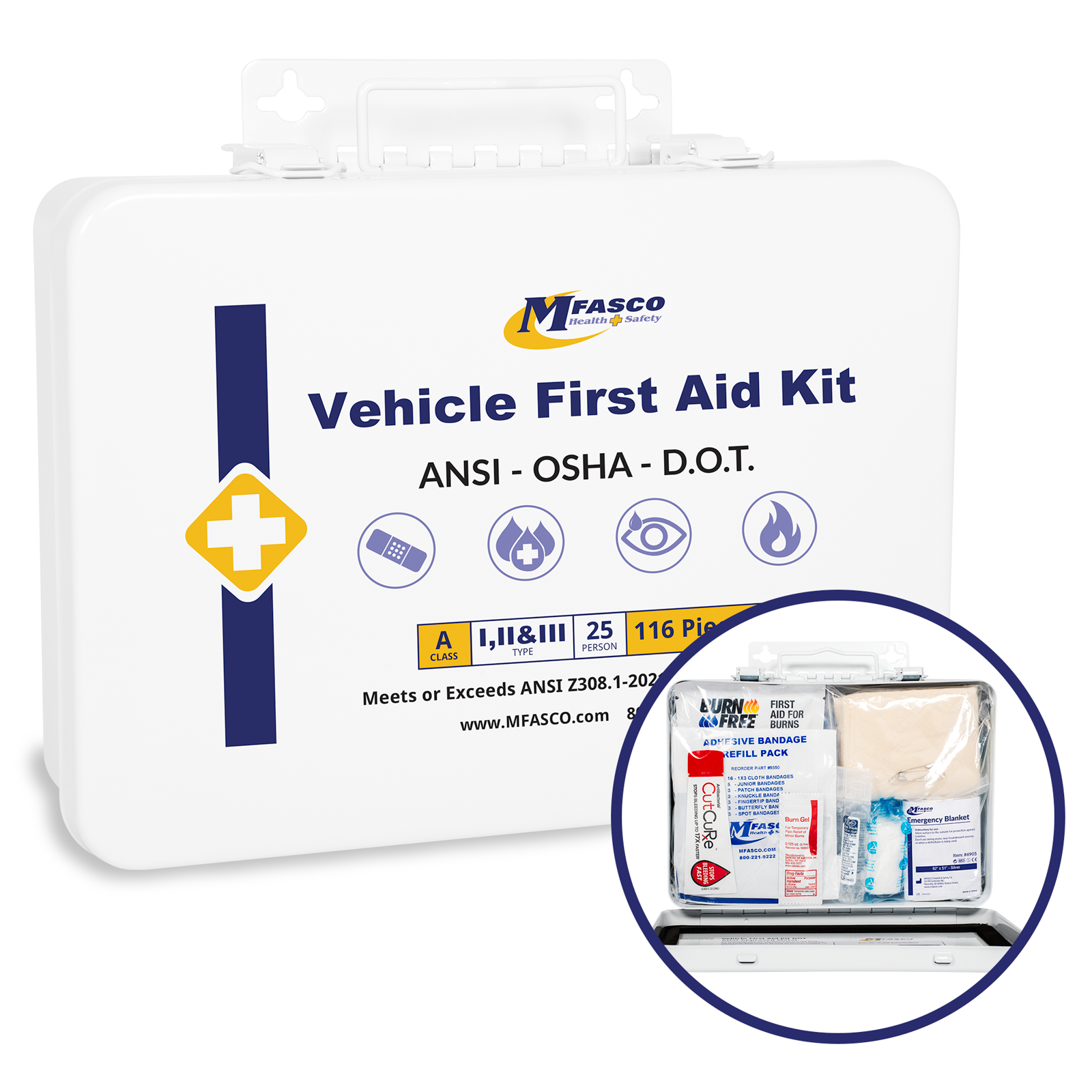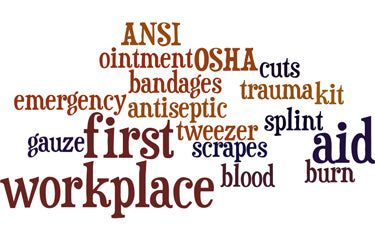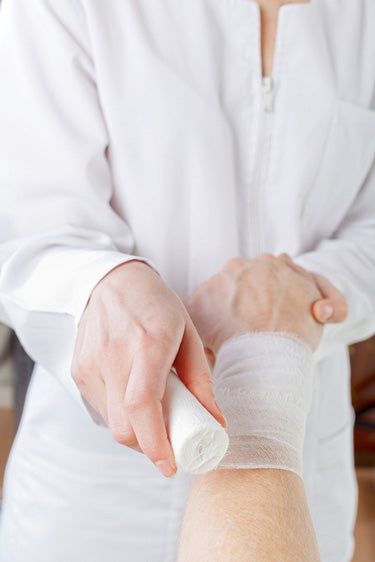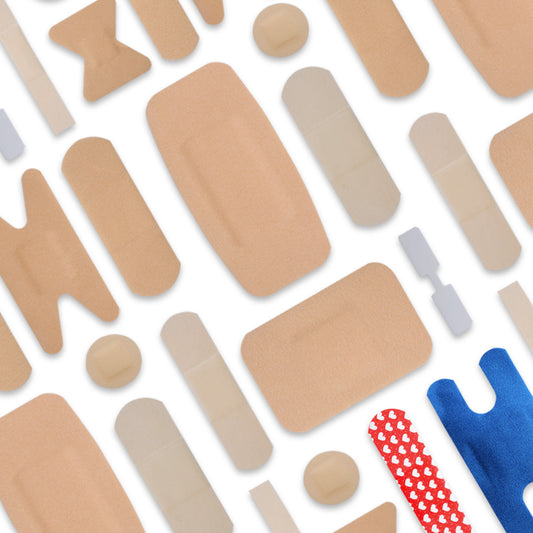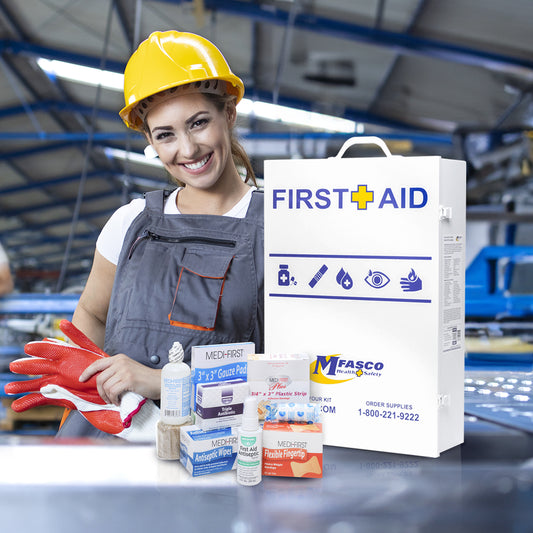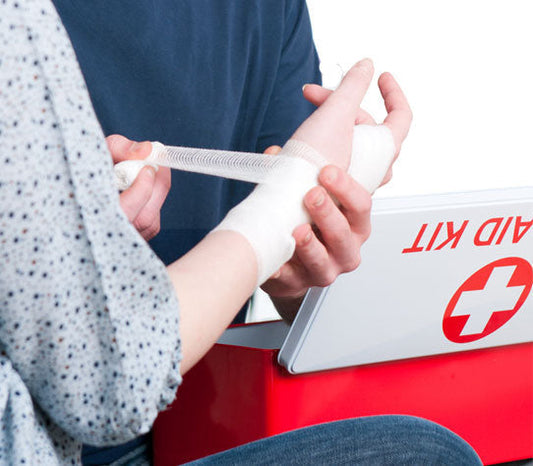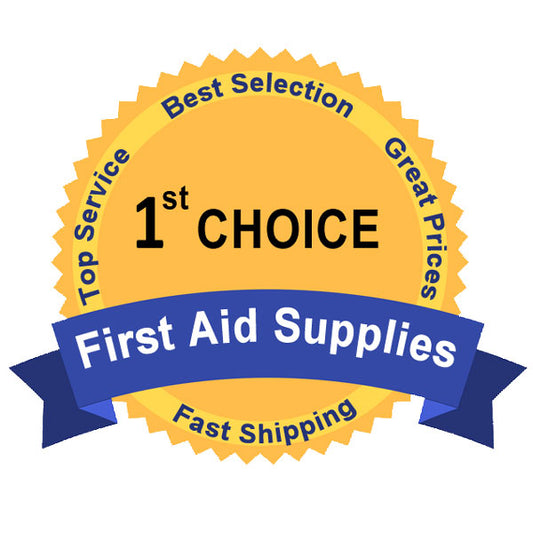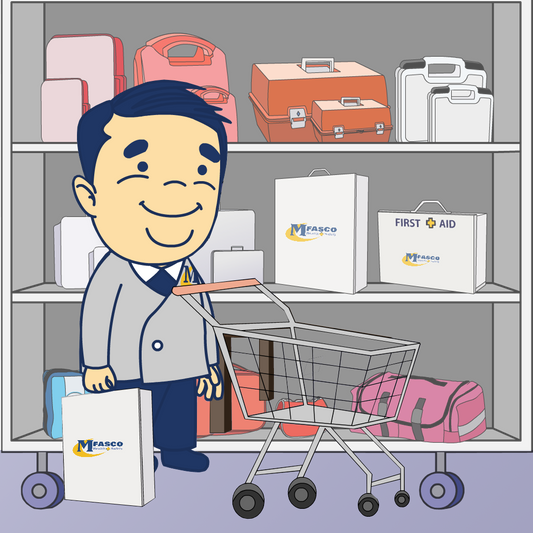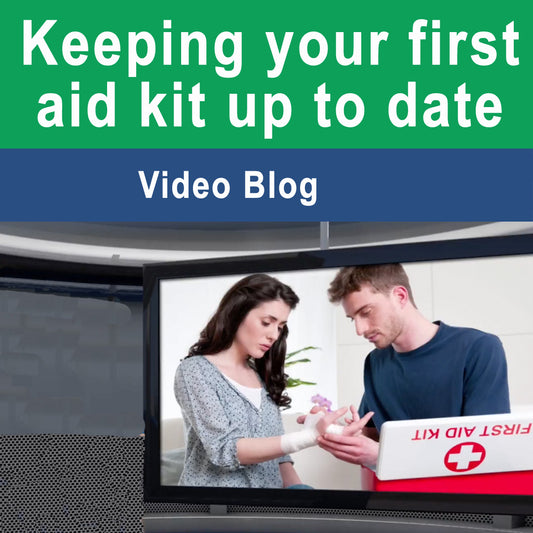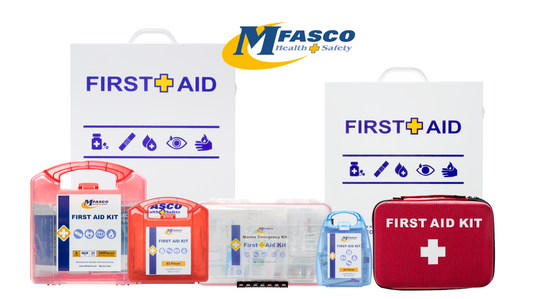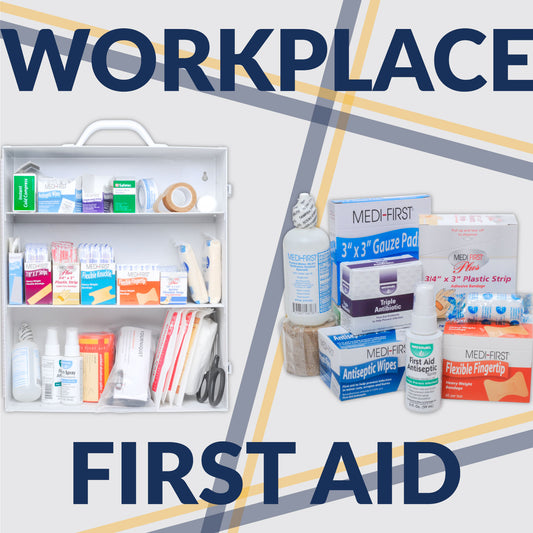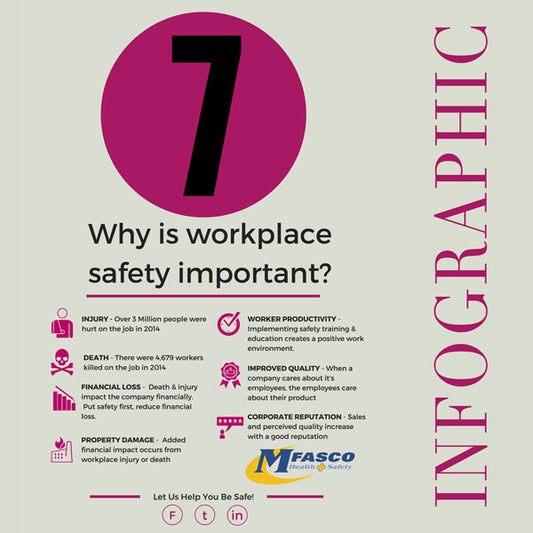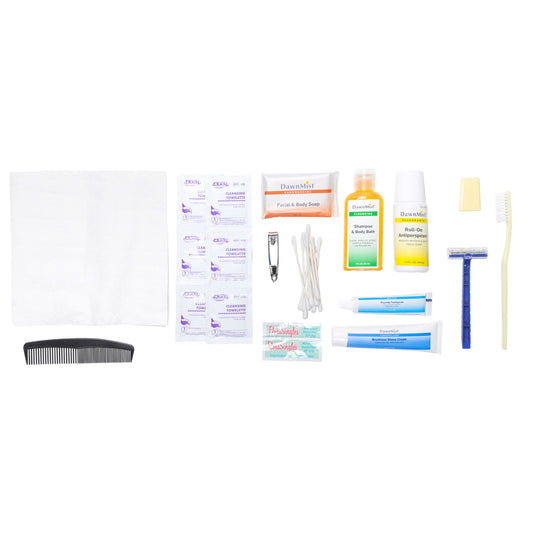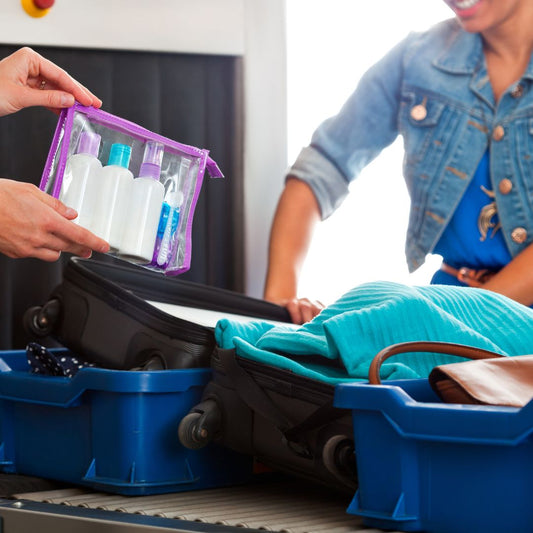What Is a First Aid Kit and What is Used For?
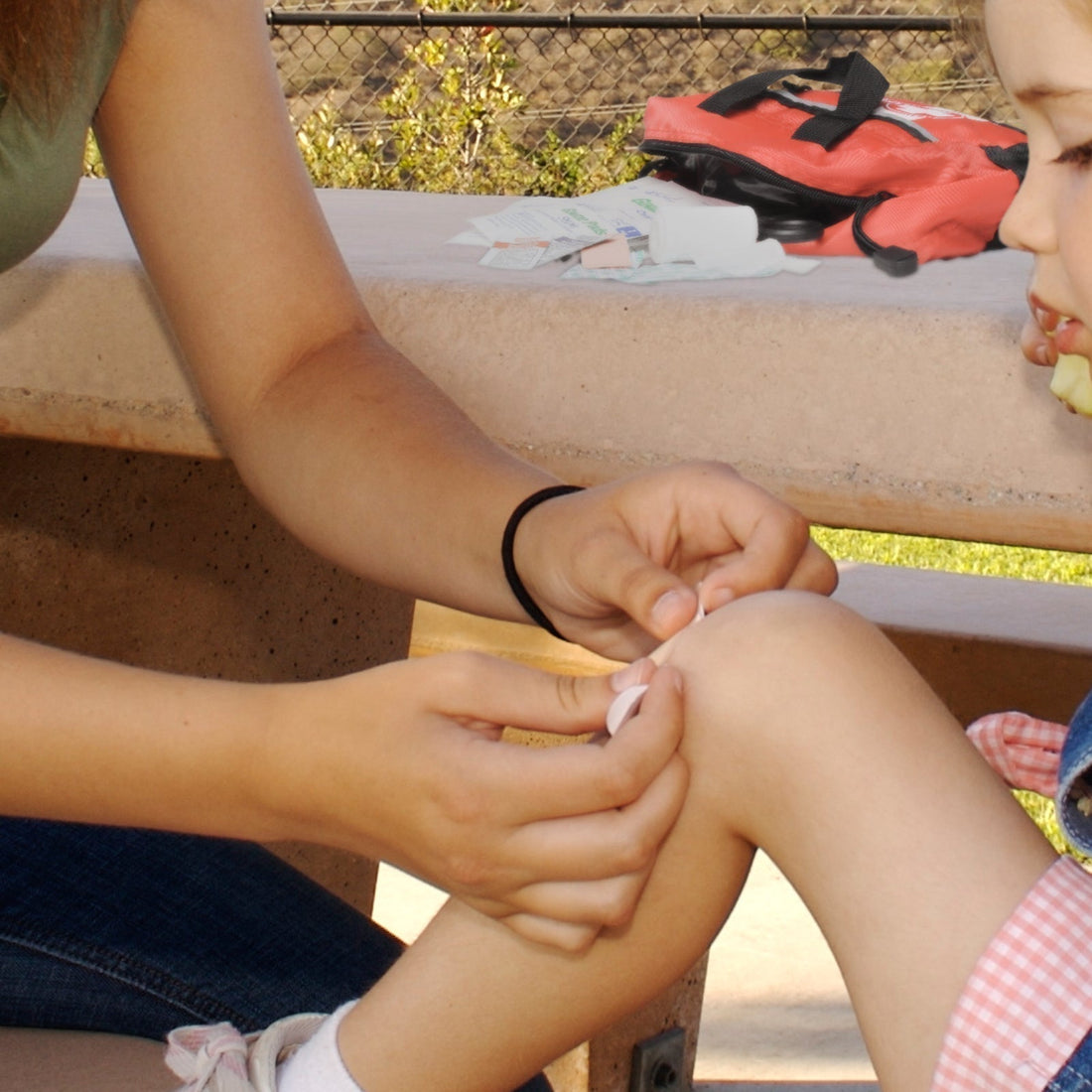
Treating injuries & First Aid Kit Fill List
A first aid kit is a box, bag or pack that holds supplies used to treat minor injuries including cuts, scrapes, burns, bruises, and sprains. More elaborate first aid kits can also include survival supplies, life-saving emergency supplies, or convenience items like bug sting wipes or cold and flu medicines.
Individuals who want to prepare for medical emergencies or if they have an injury will want to have the appropriate first aid supplies ready to use. The purpose of this article is to give you an idea of the types of injuries to prepare for and a list of the supplies used for each injury. There is a supply list for basic first aid kits that can be used for the injuries described. As always, when possible, seek medical attention for any serious injuries.
Types of Injuries and what First Aid Supplies to Use

Trauma Injuries
Trauma injuries can range from minor to life-threatening, requiring immediate attention with specialized first aid tools. Each injury demands a tailored approach to prevent further damage and promote recovery. Below are essential first aid measures for the most common types of trauma injuries.
-
Gunshot Wound: Use pressure bandages, compressed gauze, and tourniquets to control severe bleeding. Stop the Bleed packs include these critical tools for rapid response in high-risk situations.
-
Severed or Crushed Limb: A tourniquet remains essential to stop hemorrhaging and stabilize the victim until professional help arrives.
-
Deep Wounds: Apply compressed gauze, abdominal dressings, and compress bandages to exert pressure, control bleeding, and prevent wound contamination.
-
2nd & 3rd-Degree Burns: Treat with sterile water, water-based gels, and sterile gauze dressings. These supplies can support healing serious burns as they cool the skin, reduce infection risk, and provide pain relief.
- Broken Bones: Secure a fracture with triangular bandages, splinting materials, and elastic bandages. For compound fractures, use sterile gauze and compress dressings to absorb blood and protect the wound until professional medical care is available.
Proper handling of these trauma injuries not only controls immediate risks but buys critical time before professional medical help can intervene. Transitioning from trauma to more everyday injuries, next we explore how to address common minor injuries effectively.
Minor Injuries
Minor injuries like cuts, burns, and sprains are more frequent, but treating them promptly ensures a quicker recovery and prevents complications. The right supplies help alleviate pain, reduce swelling, and keep wounds clean.
-
Cuts & Scrapes: Treat minor cuts and scrapes with adhesive bandages, butterfly closures, antiseptics, and gauze pads. Secure dressings with first aid tape or gauze rolls.
-
Minor Burns: Use burn sprays and water-based burn gels to relieve pain and cool the affected area. Avoid oils or petroleum-based ointments, which can trap heat.
-
Minor Eye Irritations: For dust or dirt in the eyes, sterile eye irrigation solutions effectively rinse out irritants. Simply use a single-use bottle of eyewash and or an eye cup to rinse the eye
-
Sprains & Strains: Reduce swelling with instant cold packs and support the injured area with elastic compression bandages. Some sprains may require splinting using materials like tongue depressors or moldable aluminum splints.
-
Eye Injuries: Immediate medical attention is necessary for eye injuries, but eye pads can help protect the area from further damage while awaiting professional care.
By keeping a wide variety of first aid supplies on hand, minor injuries can be quickly treated, reducing discomfort and preventing them from escalating into more severe conditions.
Skin Care-Related Injuries
Typical skin-related ailments include sunburn, poison ivy, hives caused by allergic reactions, and insect stings. Most of these are easily treated by the use of over-the-counter ointments. Burn gel is helpful for minor sunburn, while poison ivy can be treated with special medicated washes and creams. Bug bites are usually harmless and can be treated with bug wipes or an antihistamine like Benadryl. A doctor should see serious reactions that restrict breathing or involve swelling.
Below we have included a list of basic first aid supplies that should be included in every kit. The types of injuries are listed above.
-
Adhesive tape - Secures dressings for minor wounds.Instant cold pack - Provides cold therapy for sprains and muscle injuries.
-
Gauze Pads (Various Sizes) - Sterile dressings for cuts and scrapes.
-
First Aid Guide - Offers step-by-step instructions for treating emergencies.
-
Sterile eye pads - Protects the eye from further damage.
-
First aid burn cream - Helps treat minor burns and reduce pain.
-
Gauze bandage (Roller) - Gauze roll bandage for dressing minor wounds and burns.
-
Triangular bandage - Can be used as a sling, head dressing, or to secure other dressings.
-
Medical Gloves - Protects against contact with bodily fluids.
-
Scissors (Blunt-Ended) - Used for cutting first aid tape, elastic bandages, gauze, or even clothing
-
Combine Pad (Sterile) - Sterile, absorbent dressing to help stop bleeding and protect large wounds
-
Adhesive Bandages (Various Sizes and Shapes, Latex-free)- Adhesive bandage dressings for minor wounds
-
Elastic Bandage Roll (Cohesive)- Cohesive bandage roll for supporting injuries and adhering to first aid dressings
-
Hand Sanitizer (Alcohol Based)- Antibacterial, alcohol hand sanitizer packets for hand hygiene in the workplace
-
CPR mask (Single-Use) - Protects the rescuer from hazardous bodily fluids
-
Antiseptic Towelette (Individual Packets)- For cleaning and disinfecting of cuts and scrapes. It also helps to prevent infections in wounds
Additional Supplies:
-
Medications for pain relief.
-
Ibuprofen Tablets (200mg) - For pain relief and reducing inflammation (consider allergies common in NC).
-
Acetaminophen Tablets (500mg) - For pain relief and fever reduction (consider seasonal illnesses).
- Aspirin Tablets (325mg) - For pain relief and fever reduction (Note: Aspirin should not be given to children).
-
Ibuprofen Tablets (200mg) - For pain relief and reducing inflammation (consider allergies common in NC).
- Hydrogen Peroxide Solution (3%) - For cleaning minor cuts and scrapes (consider outdoor activities common in the area).
- Fine Point Tweezers (Stainless Steel) - For removing splinters and small debris (consider the prevalence of wooded areas).
Additional Considerations for your First Aid Kit:
-
Insect Sting Relief Pads/Cream: Given the warmer climate and outdoor activities, insect stings are more likely.
-
Sunscreen (SPF 30 or Higher): Protecting against sunburn is crucial in the sunny climate.
-
Oral Rehydration Salts/Powder: Important for rehydration, especially during hot weather and outdoor activities.
- Allergy Medication (Antihistamine): Consider the high pollen counts during certain seasons.
Important Notes for your Region:
-
Weather Preparedness: Consider adding items that might be useful during severe weather events common in the area (e.g., small flashlight, emergency whistle).
-
Local Hazards: Be mindful of specific hazards in the area, such as wildlife encounters or potential exposure to poison ivy/oak.
- Storage: Store the kit in a cool, dry place, easily accessible, and consider keeping a smaller, portable kit in your car for travel.
